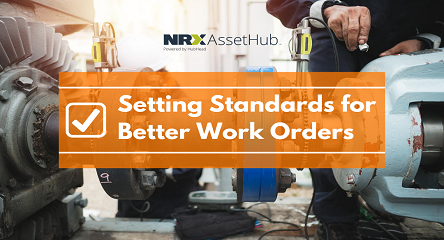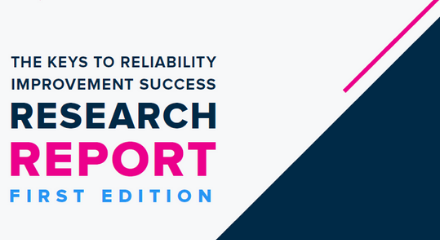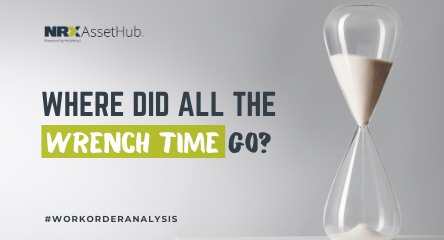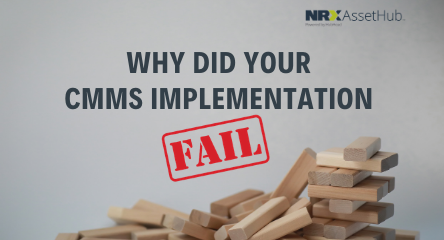CMMS Software Paves Way for Sustainable Water Systems
There are many different facets involved in the process of providing clean and safe water for citizens. Local government municipalities and water utility companies must take proper care of critical equipment and facilities, complete maintenance tasks, comply with regulatory standards and maintain detailed records among other activities. Computerized maintenance management systems (CMMS) and enterprise asset management (EAM) software can streamline many of these activities and more.
Aging Assets
According to Water Finance & Management, “many water and sewer utilities have seen a drastic increase in both maintenance costs and capital replacement needs as the condition of assets continue to decline.” The article on selecting a CMMS for water utilities went on to state that, “many times, this asset deterioration is due to under-maintaining and not tracking the condition of an asset.” Luckily, CMMS software provides basic features including work order management, preventive maintenance scheduling, inventory control, purchasing and reporting. Advanced enterprise CMMS solutions (i.e. EAM software) typically provide even more features such as real-time dashboards displaying key performance indicators (KPIs), mobile accessibility and integration with other applications.
Integrations with Key Systems
Integrating EAM software with condition monitoring technologies and geographic information systems (GIS), like ArcGIS, is especially helpful in the water industry. Condition monitoring sensors or programmable logic controllers (PLCs) attached to equipment can detect changes in vibration, temperature and other key factors. Integrating condition monitoring with CMMS provides a means to address issues detected and develop actionable plans to correct problems. Additionally, a CMMS system can pinpoint the exact physical location of an asset utilizing its latitude and longitude through direct access with ArcGIS or another location-based system.
Tracking Fixed and Rolling Assets
This integration is also helpful for assets in which physical locations may vary—or assets in motion. CMMS/EAM systems are typically used in the water industry to track and maintain stationary assets like pumps, pump stations, pipes, hydrants, manholes, etc. But it’s important to keep in mind that water utility employees require transportation in order to complete maintenance and asset management tasks. The evolving role of CMMS in the water industry now includes the capability of tracking both fixed and rolling assets such as cars, trucks, trailers, boats and others. Considering ongoing maintenance activities such as oil changes and tire replacements, it’s certainly beneficial to utilize fleet maintenance features available within CMMS/EAM software.
Coordinating with Local Government
City and county governments typically house a variety of departments, including a dedicated public works staff. CMMS software for government can greatly enhance communication between public works and other departments. Updating employees on projects and deadlines can be extremely challenging. Imagine granting access to a centralized database of information that keeps all users in the know—not to mention the ability to coordinate with one another.
The City of Reidsville in North Carolina utilizes an enterprise CMMS solution, called iMaint, to manage assets such as vehicles, equipment, facilities, streets, water lines, sewer lines, a water treatment plant, a wastewater treatment plant, parks and thousands of spare parts. The City of Reidsville CMMS allows its employees to access up-to-date information on assets, create preventive maintenance schedules and manage repairs for each piece of equipment. Utilizing historical records within iMaint also helps the city with regulatory compliance and insurance claims. For example, when a claim is made against the city’s no-fault sewer backup policy, they are able to provide detailed records indicating sewer lines were properly maintained.
Complying with Regulatory Standards
Water industry professionals must abide by numerous regulations at local and national levels to ensure the safety of citizens. For this reason, they should be prepared for unplanned inspections and audits by keeping detailed records on assets, maintenance schedules, warranties, repairs, contaminant levels, treatments and more. Utilizing CMMS for compliance can greatly reduce the amount of preparation required for an audit or inspection. Rather than staff taking time to manually retrieve documentation, a CMMS for water utilities can generate the reports and graphs needed to demonstrate compliance. Consequently, staff has time for more productive job duties and the risk of noncompliance penalties decreases dramatically.
Water utilities, local government municipalities and public works departments can utilize CMMS/EAM software to maximize assets’ return on investment (ROI) and reduce unnecessary downtime. Selecting a maintenance management solution is the first step of implementing a proactive maintenance program that will enhance the sustainability of critical water systems.





